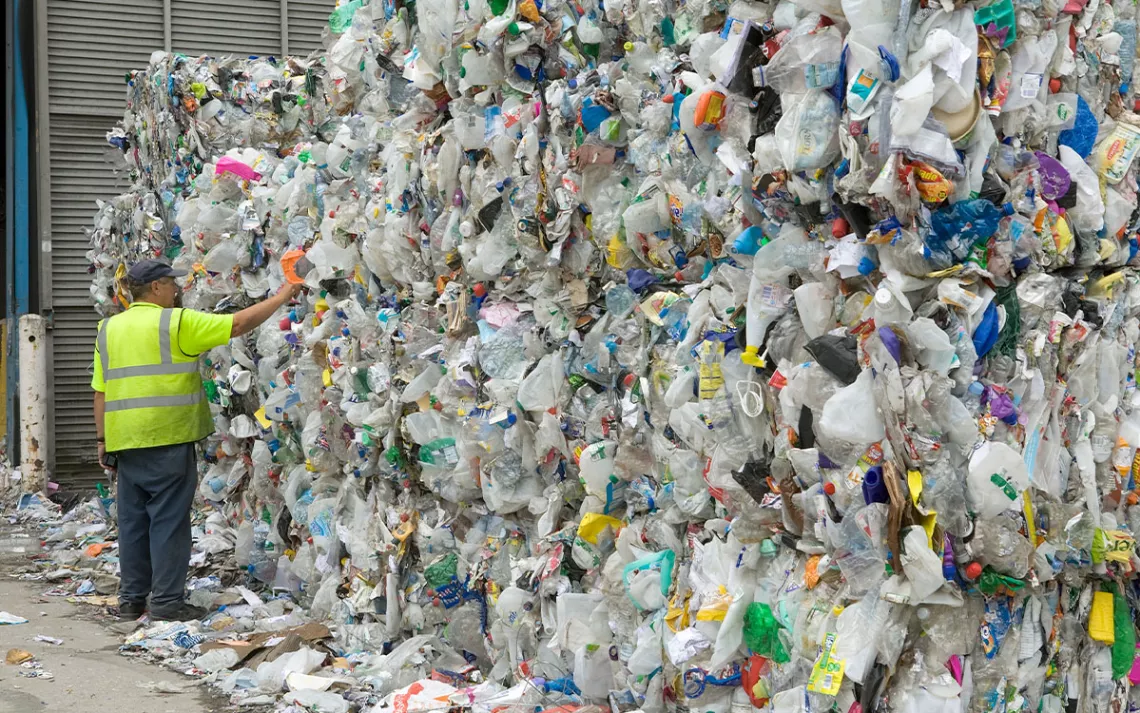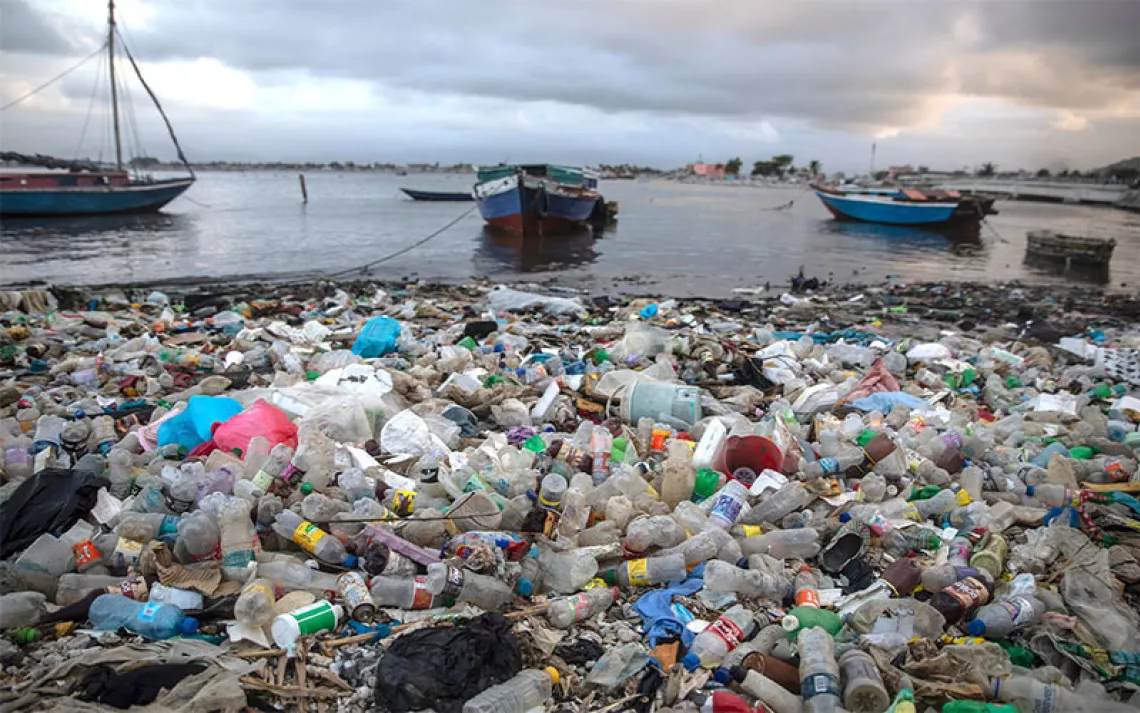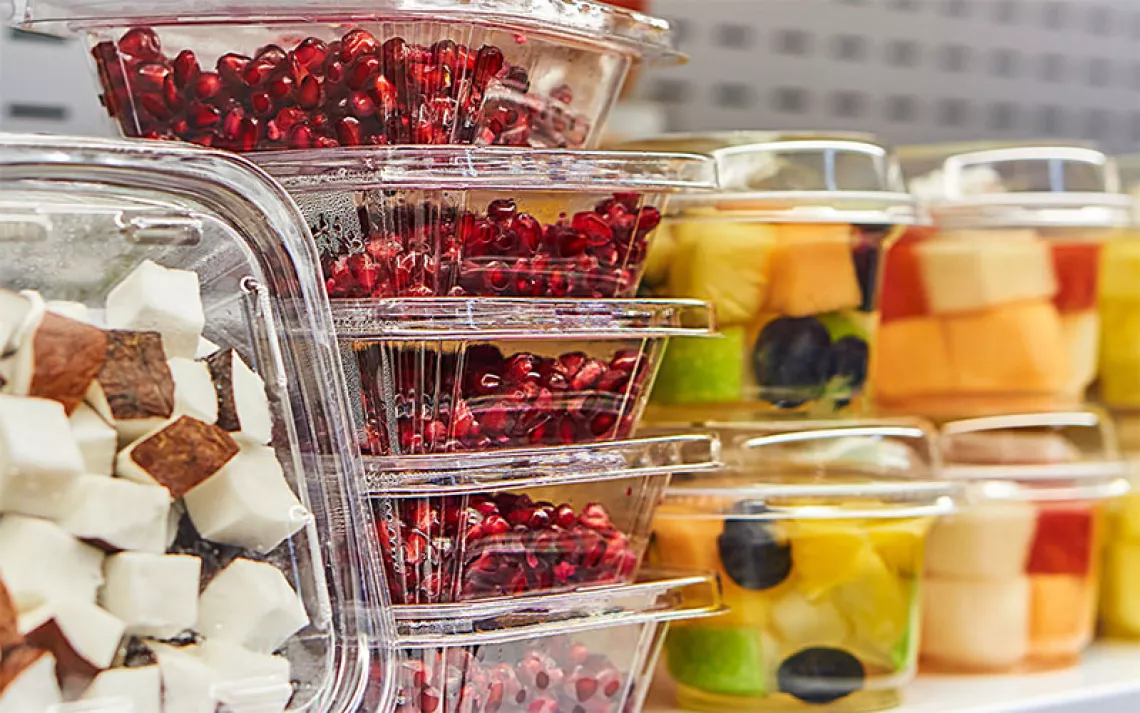Plastic People
Thanks to Big Oil, plastic pollution is everywhere, including inside our bodies

Photo by Derek Berwin/Getty Images
Distributed by Trice Edney Newswire
If you are reading this indoors, there is a good chance there are hundreds of invisible plastic particles floating around in the room you are in. There is also a good chance you may be breathing in some of them.
And we are not just breathing in plastic pollution. We are eating it and drinking it. To add insult to injury, much of that plastic pollution came from items like plastic water bottles that consumers thought would be recycled.
The world’s largest producer of plastic polymers for single-use plastics is ExxonMobil. Right now, California attorney general Rob Bonta, along with the Sierra Club and other environmental groups, is suing ExxonMobil for its yearslong campaign of deception about the recyclability of plastic products.
In discussing the suit, Bonta told a story of a 14-year-old who “was just distraught over the fact that all of the plastic items that she carefully selected to make sure they have the chasing arrows on it and then make sure that after she used it, she placed it thoughtfully and diligently in the blue container for recycling—that 95 percent of the time, that item was not recycled.”
The world produces about 430 million tons of plastic each year. Much of that is single-use plastic that ends up in the environment. About 22 million pounds of plastic enter the Great Lakes alone each year, with half of it going into Lake Michigan. And the plastic-contaminated water from lakes, rivers, and streams ends up in our drinking water and our oceans. Globally, about 12 million tons of plastic enter our oceans each year. That is a garbage truck worth of plastic every minute.
Let us remember that Big Oil produces the petrochemicals behind plastics.
Plastics do not decompose. They just break down into smaller and smaller pieces of plastic until eventually they become tiny particles called microplastics and nanoplastics.
As a result, microplastics are everywhere and in everything. The plastic bags and bottles that find their way into landfills and waterways eventually become microplastics. Microplastics are also tiny enough to be airborne.
Sherri A. Mason is a leader in plastic pollution research who has called attention to freshwater contamination from microplastics. She has pointed out, “Because we find plastic pollution within fresh water throughout the planet, it’s not surprising that we find it in our tap water. In 2017, we examined 159 samples of tap water collected from 14 different countries. Eighty-eight percent of these samples showed evidence of microplastic contamination, with an average of 5.5 particles per liter. Almost all (98 percent) of these particles were microfibers, which suggests that air is the primary source of contamination.”
Plastics get into our waterways in a variety of ways, including “microbeads” in shampoos and laundry detergents and small pellets used in pre-production manufacturing known as “nurdles.” Nurdles are a major source of the microplastic contamination in the Great Lakes because many manufacturing facilities in the region use them. All that plastic then enters the food chain. One way is that it breaks down into tiny plastic grains that are mistaken as algae and microplankton by fish.
Over the past four years, studies have found microplastics in human placentas, breast milk, and livers. More recent research over the past year has now found them in people’s lungs, testicles, and brains.
The studies that found microplastics present in testicles found them in every single sample analyzed. Scientists think it could be linked to downward trends in sperm counts and fertility.
The microplastics found in human brains were found in the olfactory bulb, suggesting they could be getting inhaled through the nose. Phoebe Stapleton, a professor of pharmacology and toxicology at Rutgers University, told CNN, “I really do think that plastics are going to be in every place in the body that we look. This is just more evidence.”
We know plastic contamination is toxic. Plastic is made from petrochemicals that, in addition to reproductive health issues, can cause cancer, endocrine disruption, neurological disorders, immune disorders, and more.
As our awareness of plastic contamination in every facet of our lives and part of our bodies grows, let us remember that Big Oil produces the petrochemicals behind plastics. So add that to the list of ways—in addition to air pollution, climate change, and the mega-storms the climate crisis produces—the fossil fuel industry's actions are taking a disastrous toll on our health. The lawsuit to hold ExxonMobil accountable is a good start in addressing the problem, but we also need to address the microplastic contamination that is already so prevalent. And we need to change and reduce our use of plastics.
 The Magazine of The Sierra Club
The Magazine of The Sierra Club



